Boxes of delight
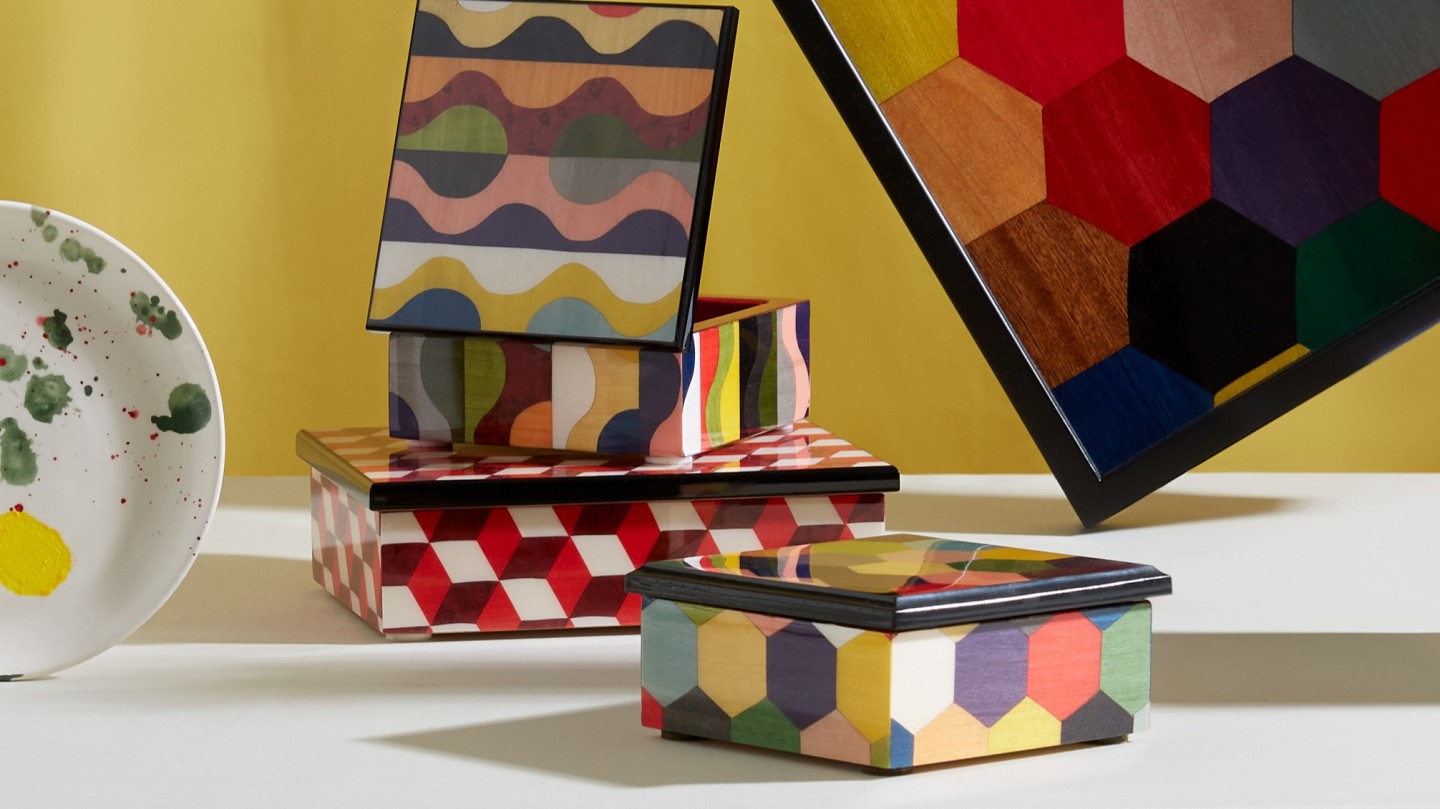
Roula Khalaf, Editor of the FT, selects her favourite stories in this weekly newsletter.
You can hold hope in a box. Boxes can conceal secrets or unleash surprises. The ancient Egyptians understood the power and beauty of the box, making decorative containers to store perfumes and mirrors that formed an integral part of burial rites. In Europe, 19th-century gentlemen commissioned elaborate dressing boxes to stash their toiletries, and signal status. An example by Asprey, which went on display at the Great Exhibition of 1851 and is now on sale with specialist antique box dealer Daniel Lucian, is veneered in kingwood and covered in ormolu panels depicting Neptune. Its gilded opulence feels almost alien to contemporary eyes more accustomed to modern-day cardboard boxes.
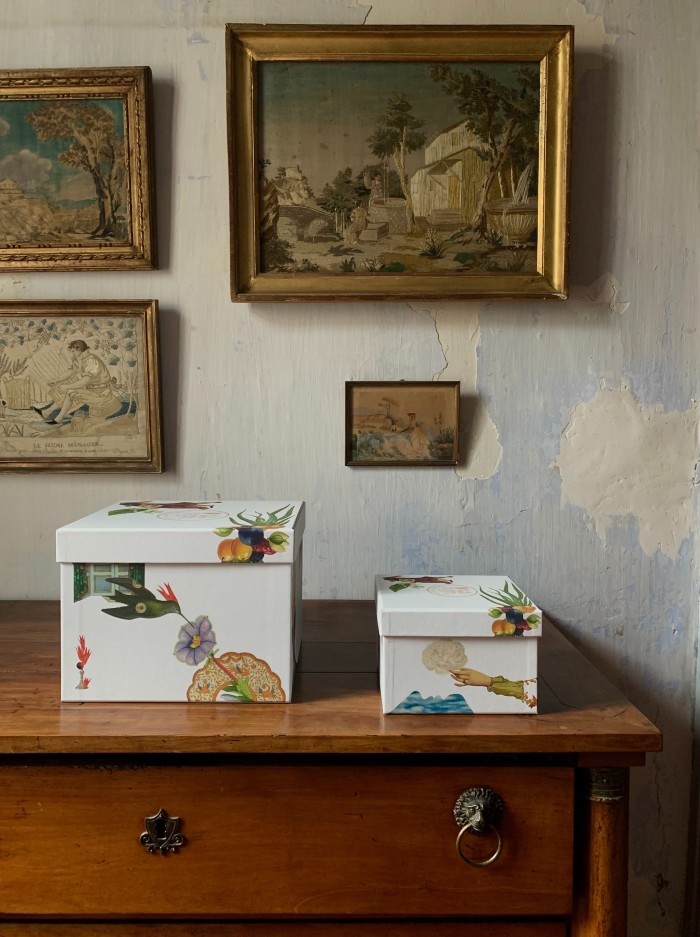
Yet the art and craft of the box lives on. In the Sorrento showroom of Biagio Barile, fourth-generation craftsman Enzo Barile has been observing his grandfather and father hand-forge their glossy marquetry boxes since he was seven. “I was basically born in the workshop,” he says. Now 32, in the mid-2000s he convinced his family to shift their focus from the traditional floral and balletic designs and introduce bright, highly complex and more modern geometric patterns. Today, Biagio Barile’s archive of around 700 joyful designs, which Barile sketches by hand, forms selections for department stores such as Bergdorf Goodman and Liberty. Assembled like a jigsaw puzzle, each numbered piece is cut by hand and dyed in English ashwood using the same 450-year-old technique.
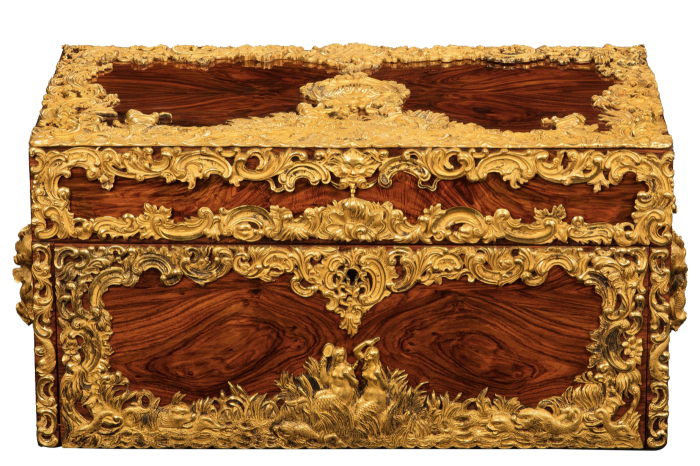
19th-century Asprey dressing box, POA, daniellucian.com
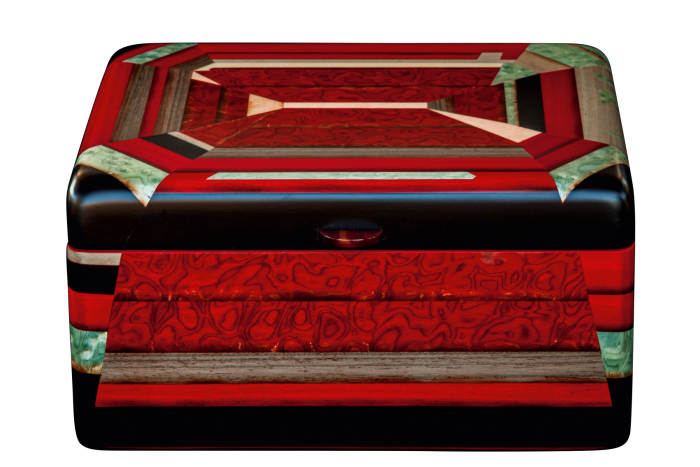
Silvia Furmanovich marquetry box, $4,500
A similar marquetry style is employed by Brazilian jeweller Silvia Furmanovich, who works with master artisan Maqueson Pereira da Silva to create brilliant jewel boxes. Part of a new line of homewares that launched at Bergdorf Goodman this autumn, the Silk Road collection recreates the rich decorative heritage of Uzbekistan – Suzani embroideries, ikat dyes, Persian miniatures – in marquetry box form. Born in Amazonia, Pereira da Silva learned his craft from German priests in Coburg. It takes 20 pairs of hands many months to make a single superlative box with a finish so fine no joins are visible.
But even a cardboard box can hold charm. When Benoît Rauzy and Anthony Watson of Atelier Vime, best known for its handcrafted Provençal wicker furniture, created their first candle last year, it came in a beautiful white box designed in conjunction with Emmanuel Pierre and featuring a wonderfully nostalgic 19th century-inspired collage. Such was the interest from clients that Atelier Vime is now launching the box as a standalone product, in two sizes. “We designed it to be an object in and of itself,” says Watson, who drew inspiration from a “secret box” dating from 1790, seen in the Wallpaper Museum in Rixheim, France. “It’s created using very old techniques by a dedicated cartonnier workshop in Brittany.” Such ornamental boxes were part of an entire métier in the 1800s in France. “I don’t like having plastic in my house,” says Watson. “So what could be better?”
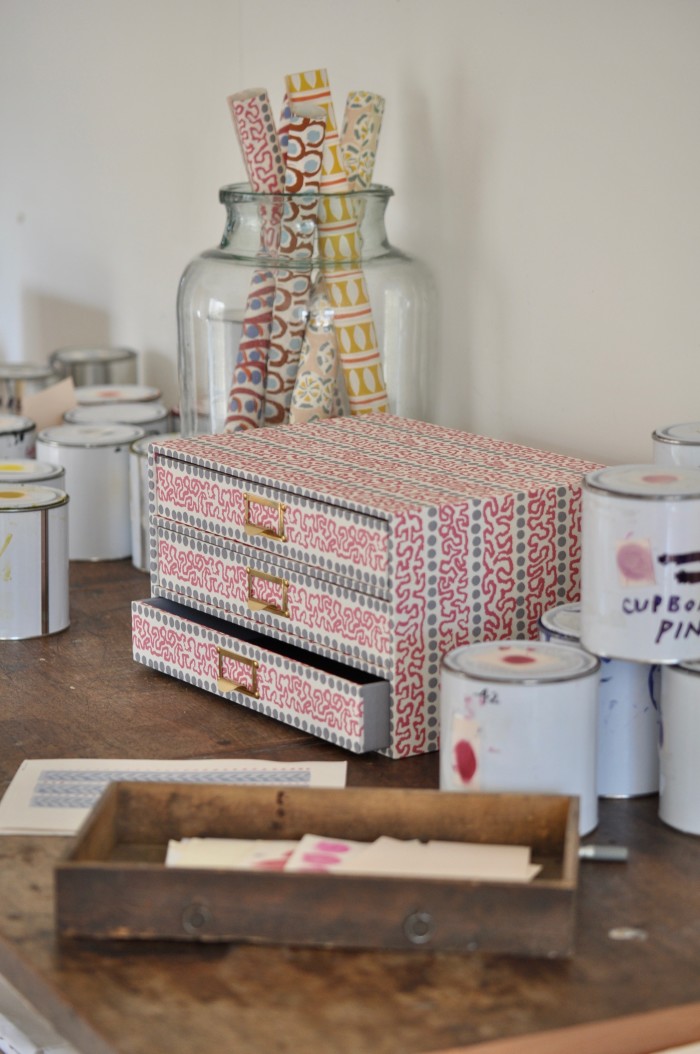
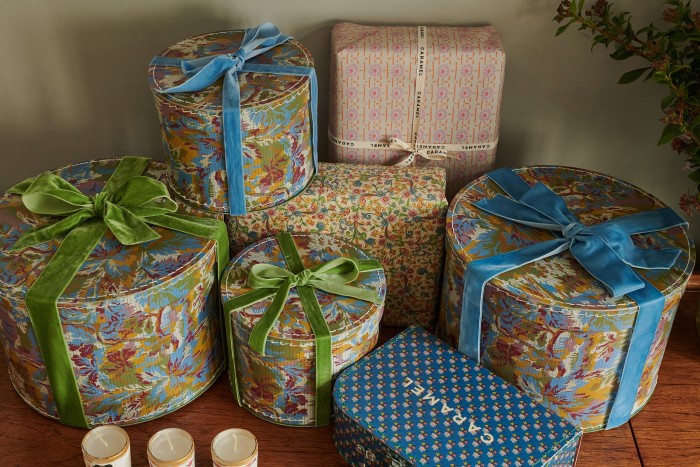
For the British artist Claerwen James, who runs the artisanal paper-making company Cambridge Imprint with textile artist Jane Powell and ceramicist Ali Murphy, a box has the power to elevate the mundane: “Why shouldn’t it be beautiful, especially when the tasks contained within are often slightly depressing – like tax receipts?” Cambridge Imprint makes everyday objects, such as boxes, lovelier and more lastingly pleasurable.
“I love boxes for their utility and attractiveness, and rarely throw them away,” says James, who collects cigar boxes, which she customises and decorates in the manner of West Coast Expressionist Richard Diebenkorn, who painted cigar-box lids that today sell for upwards of $300,000 at auction. “I’m like a squirrel. I have hundreds – they’re such a great medium for paint and great for stashing art supplies or Christmas decorations.” Her fascination with boxes can be traced back to childhood, when particular toys would be stowed away in a wooden casket, then ceremonially brought out on special occasions. Cambridge Imprint’s British-made containers include box nests, postcard boxes and box files, all in exuberant and painterly patterns created using spot-colour lithograph printing. Its Bloomsbury-style box of Collector’s Drawers comes in the wonderfully wiggly “Charleston Meander” design. “It turns out everyone has that pile of papers on their kitchen table that needs to be contained,” says James of their unerring popularity. “When you arrange things, they stop being an assortment of crap and start feeling like meaningful little treasures.”
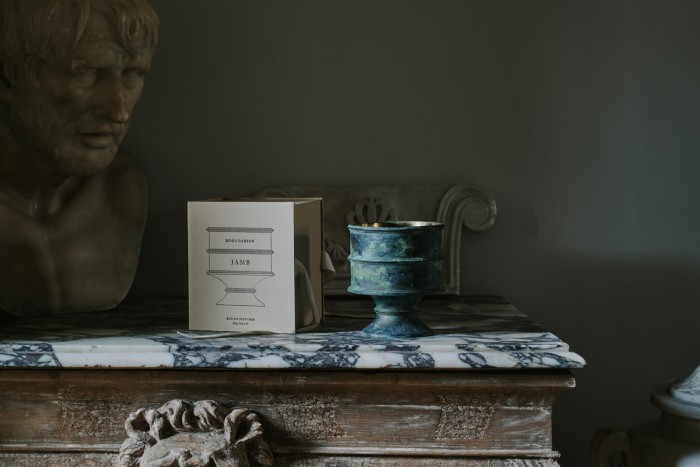
“It stems from the idea of protecting a product,” says Austin Moro, who runs the British design company Moro Dabron with Eliza Dabron. Moro Dabron’s recent limited-edition creation with the antique and fireplace reproduction specialist Jamb – a smoky, hearth-scented candle in a heavy, Roman-informed patinated bronze vessel – comes in a case as carefully deliberated as the candle. “It’s functional but also aesthetically pleasing,” says Moro. “The act of opening the box becomes as much part of the experience as the product itself. The excitement of the reveal helps to create a special moment.”
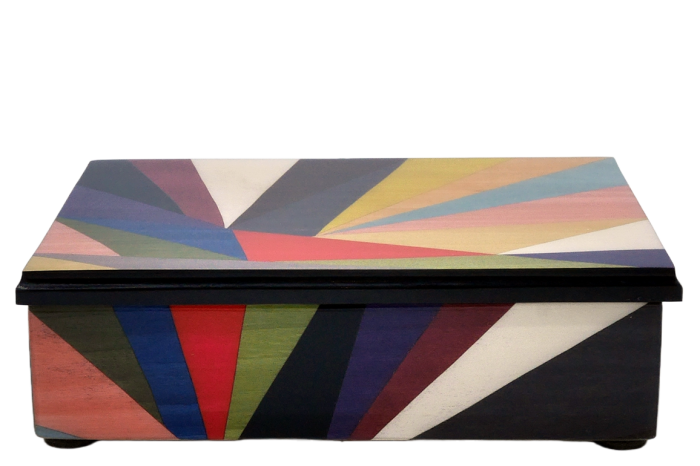
Biagio Barile Dipinto multicolour wooden decorative box, £190, greeksbearingifts.com
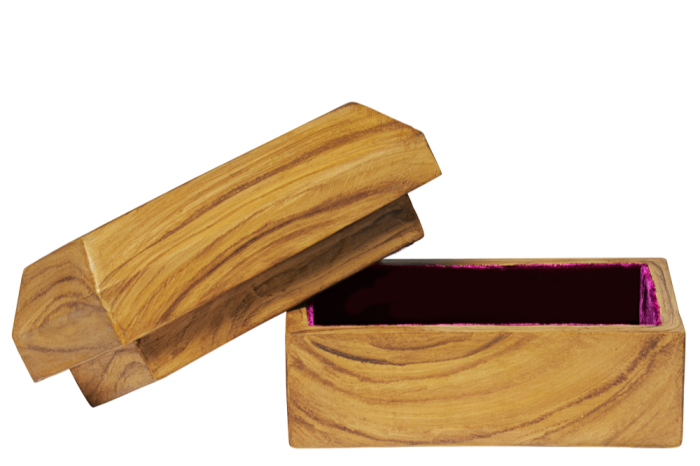
Birley faux-bois container by John Randoll, £550
Box making is as much an art as a science. The abstract boxes of British artist and designer Johnny Randoll, who formerly worked on props and decoration for private London club 5 Hertford Street, are an endeavour to conjure a sense of Victorian nostalgia. Randoll began making trinket boxes from layered papier-mâché panels, handpainted in faux-bois and lined with silk velvet, for the club owner Robin Birley’s interior line Birley, before establishing his own collection of one-off pieces. “They’re like treasure chests,” he says of the Birley containers. “The child in everyone wants to look, or hide something, inside a box. It’s a fascinating, and very human, instinct.” He’s currently creating a series of Kandinsky-inspired, hand-sculpted and hinged papier-mâché boxes covered in relief work.
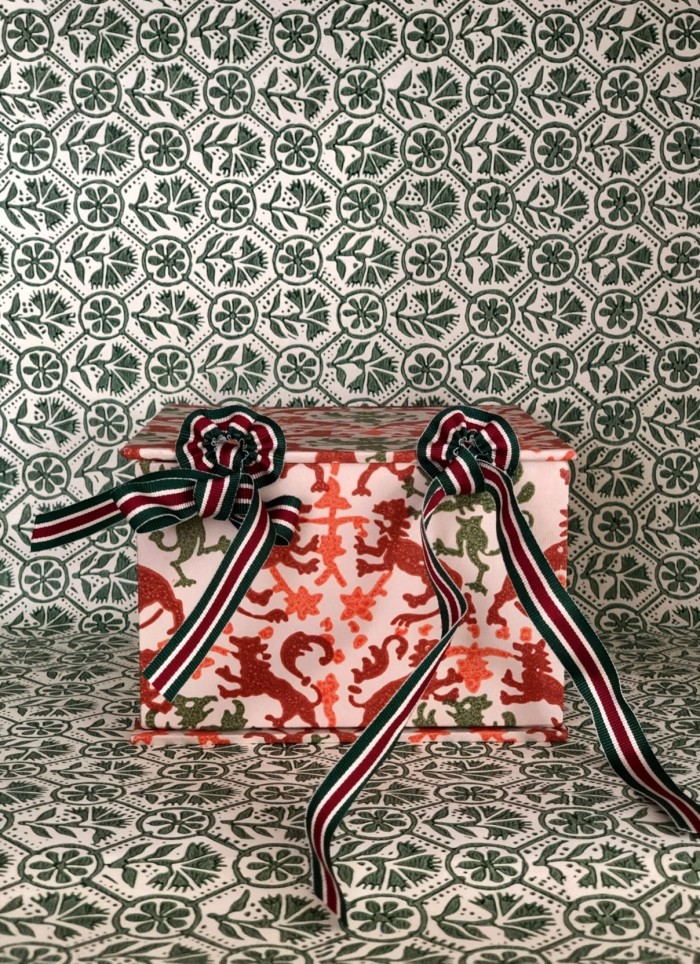
“The box can be a wonderfully ambiguous thing,” says artist and curator Tom Buchanan, author of the recently published Out of the Box: A Celebration of Contemporary Box Art (Eight Books). “It can be an act of remembrance. For an artist it represents freedom and possibility. The box is a celebration of life with a sense of tactile wonder. There’s such an endless fascination in this kind of containment in miniature.”
As Buchanan observes in the book’s introduction, we live, and even die, in boxes. Their confines are a way for us to make sense of what he calls “the absurdity of life”. So whether it’s an artist-made case or a simple cardboard container, it should be useful and beautiful.
Comments